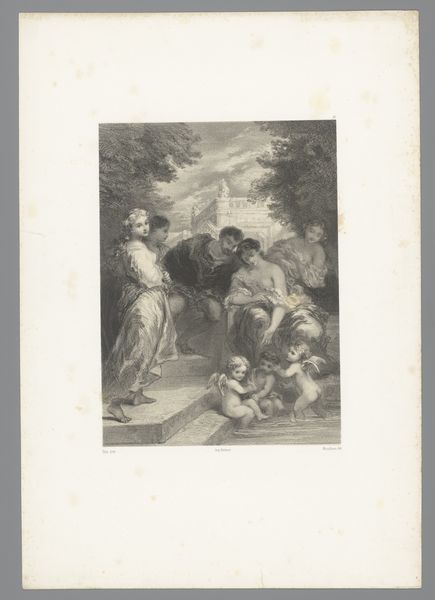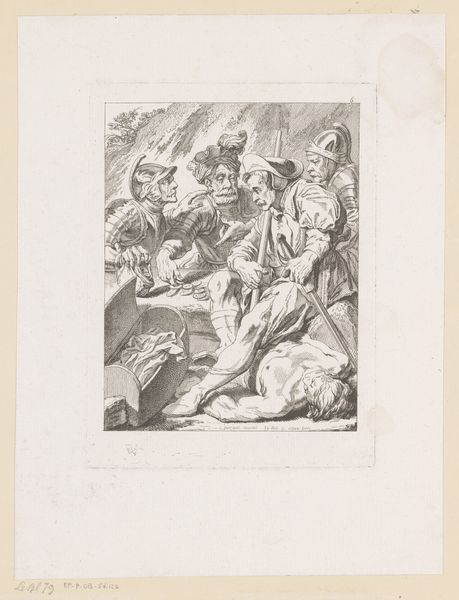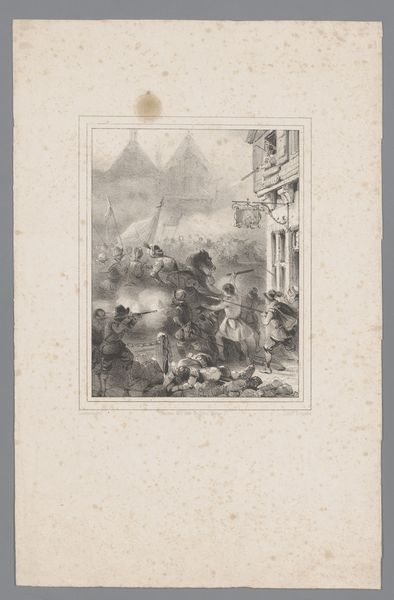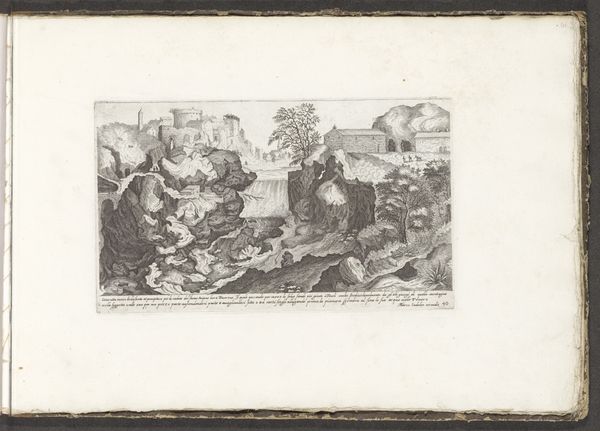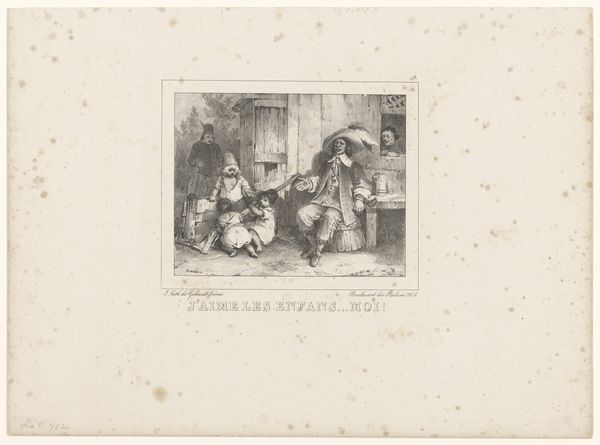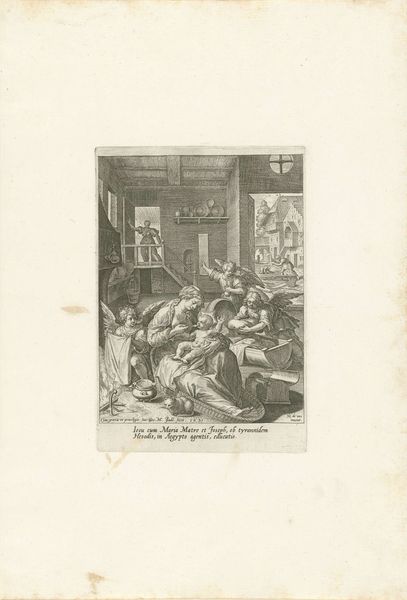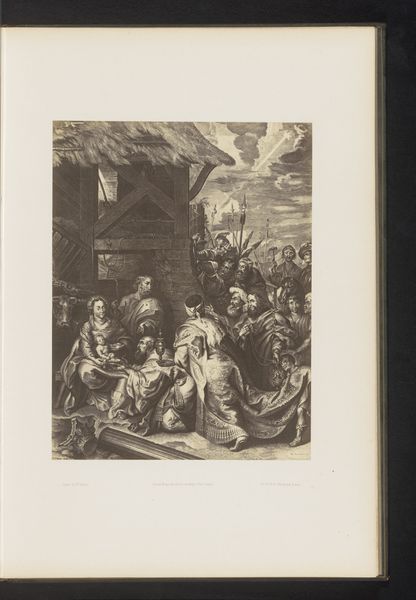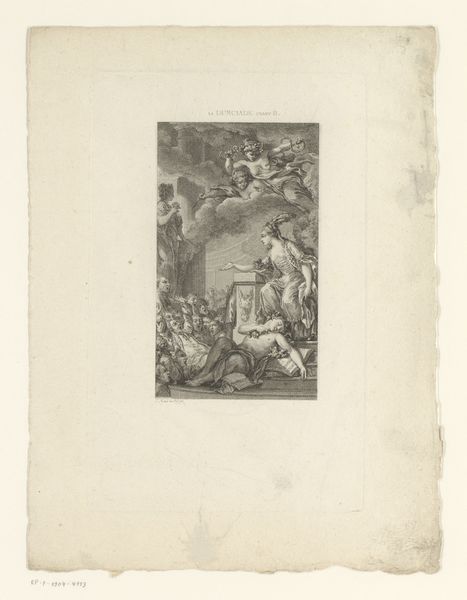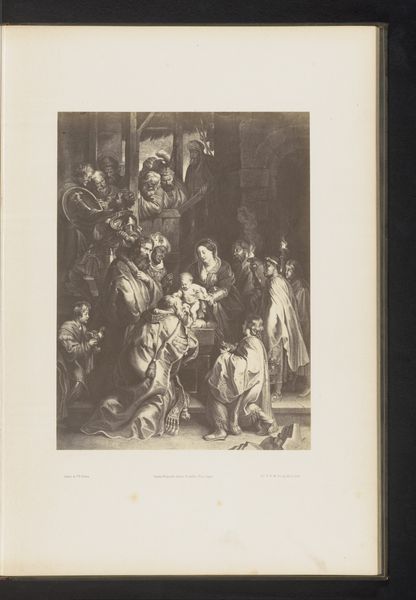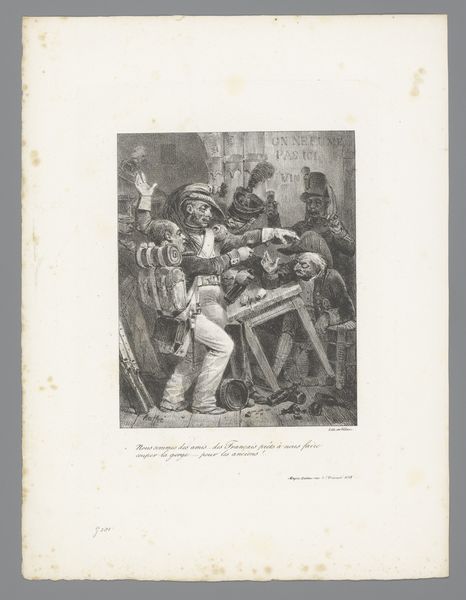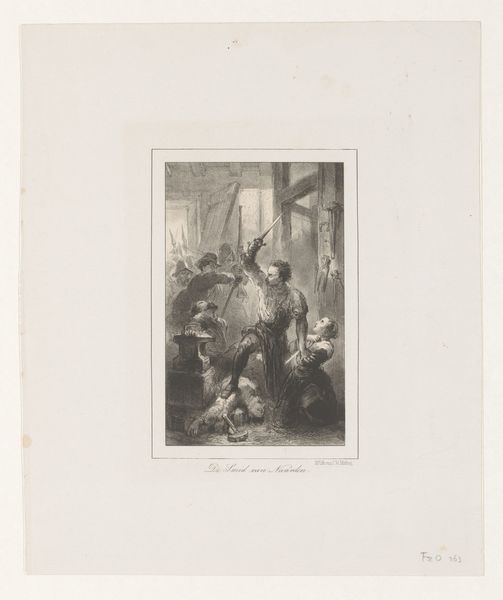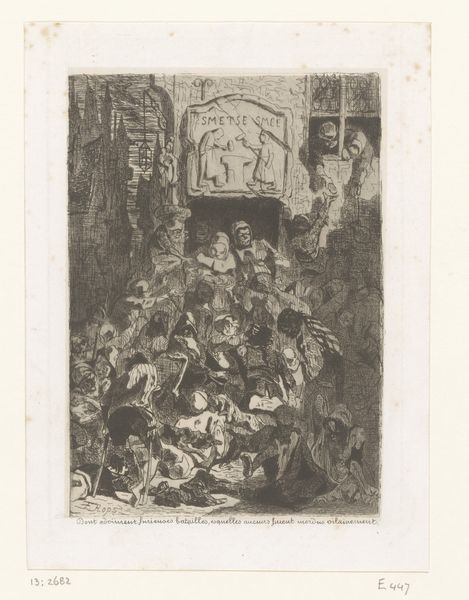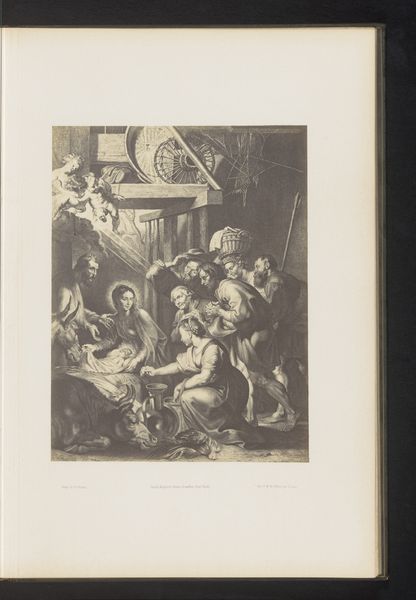
drawing, paper, pen
#
drawing
#
narrative-art
#
caricature
#
figuration
#
paper
#
child
#
romanticism
#
pen
#
cityscape
#
genre-painting
Dimensions: height 356 mm, width 276 mm
Copyright: Rijks Museum: Open Domain
Curator: It's wonderful that you're drawn to Auguste Raffet's 1827 drawing, "Children Playing outside an Old Shoemaker’s Shop Window", on display here at the Rijksmuseum. Crafted with pen on paper, this bustling scene possesses a unique blend of childlike exuberance and societal observation. I notice the narrative unfolding; what is your initial impression? Editor: My first impression is how alive the drawing feels, even though it's nearly two centuries old. The penwork is so intricate and chaotic. There is so much movement and almost a sense of contained energy, and this is what gives the piece a palpable dynamism. What strikes you the most about it? Curator: What fascinates me most is the tension between Raffet's caricatured portrayal of the children and the underlying Romantic sensibility. I like to imagine the cobblestones under my feet. Note how the energy of the group contrasts the shoemaker peering from his window. He seems weary, or perhaps amused – what do you think he feels? Editor: I think he’s somewhat bemused. Maybe even a little envious. Like he remembers those carefree days, but now he's stuck in his shop all day. What's the significance of situating the children in front of his shop, do you think? Curator: Consider how the shoemaker's shop becomes a stage for their boisterous play. It's almost as if Raffet uses this contrast to comment on the passage of time and the loss of innocence. There’s a societal element, too, isn’t there? Does it perhaps make you reflect on your own childhood, your own games, and where you played them? Editor: I suppose it does a bit, actually! I hadn't thought about that. Curator: Absolutely. Now, think about how these themes speak to us even today. It is a kind of time capsule, a reflection of ourselves, both past and present. Isn’t it charming? Editor: I agree. It is an extremely vibrant and charming capture of humanity. Thanks so much!
Comments
No comments
Be the first to comment and join the conversation on the ultimate creative platform.
